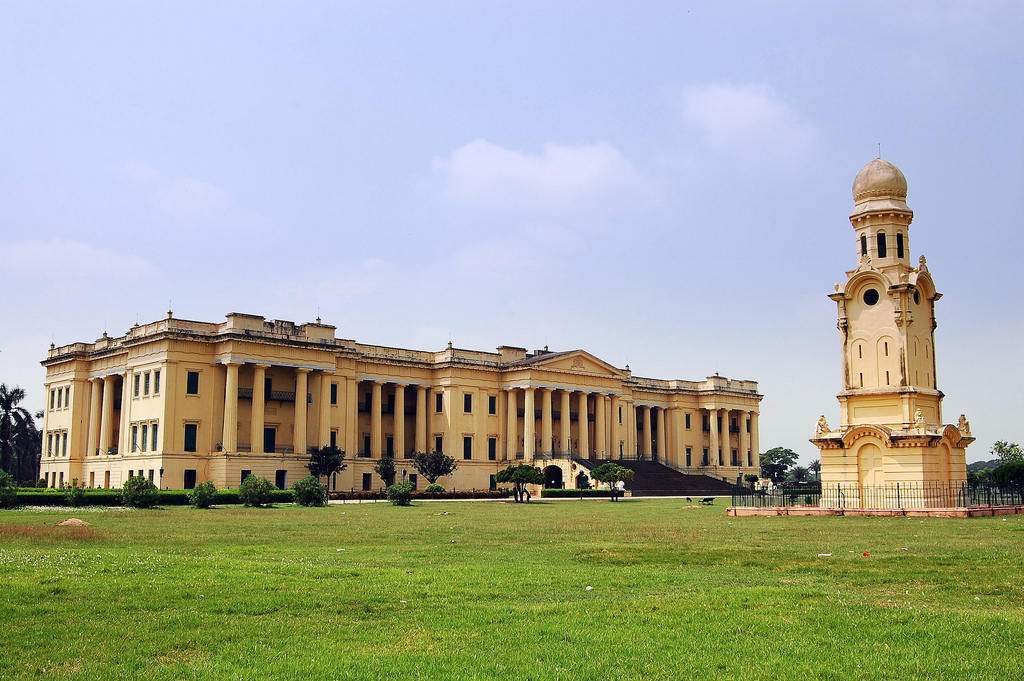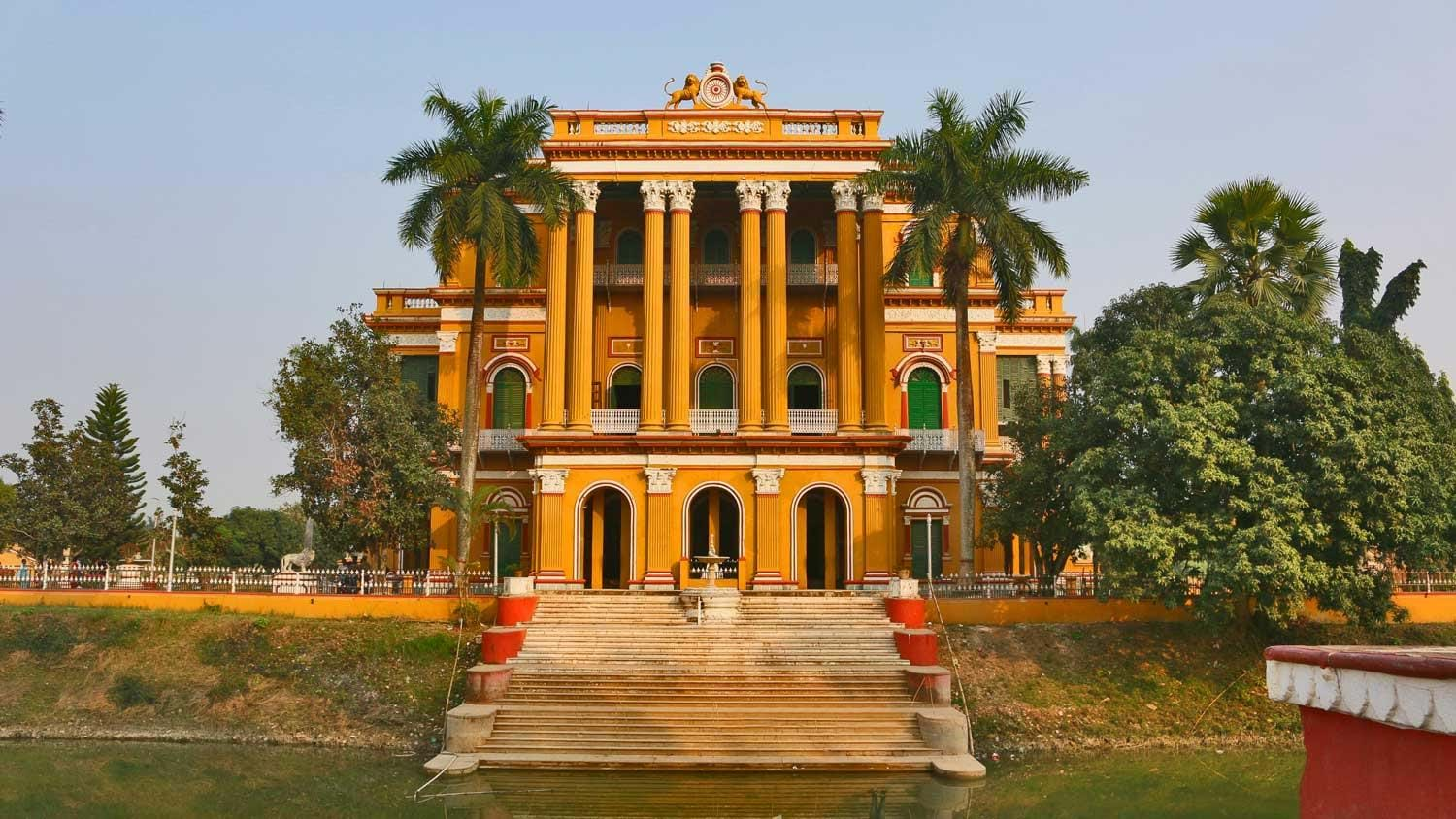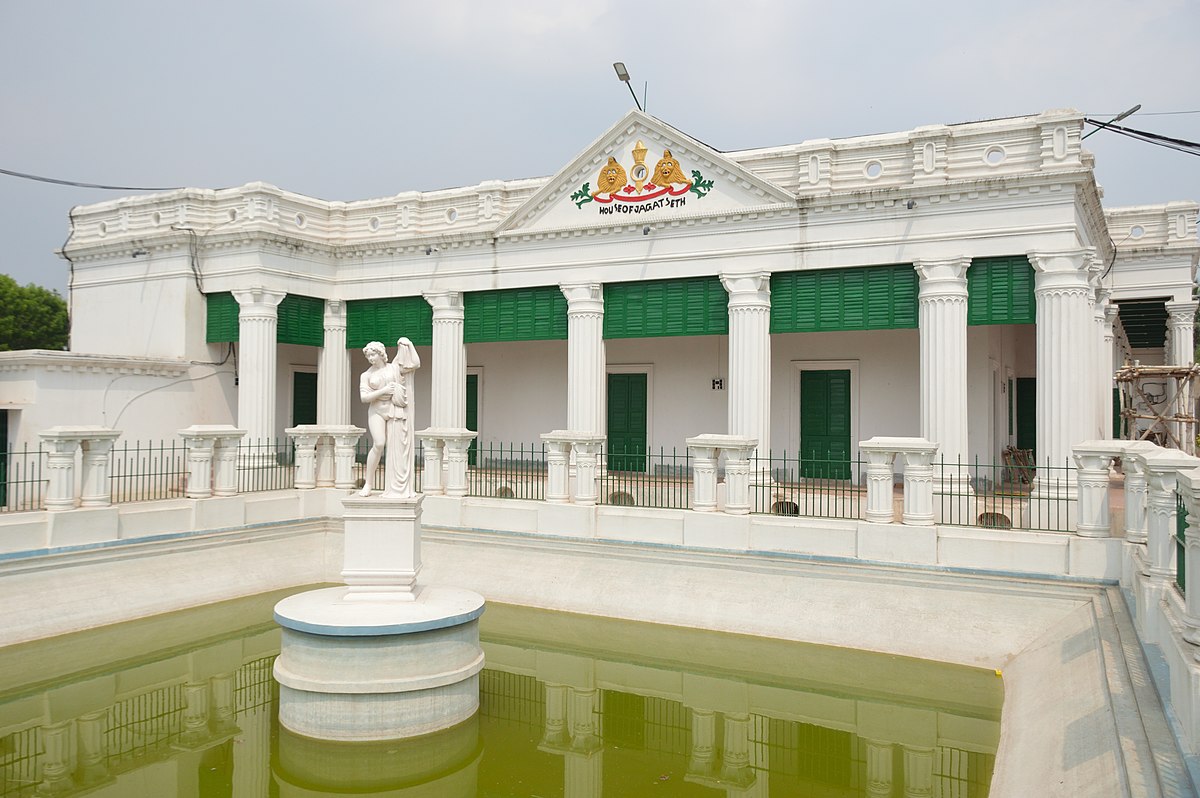Introduction
During the 18th century, Murshidabad was a prosperous city. It was the capital of the Bengal Subah in the Mughal Empire for seventy years, with a jurisdiction covering modern-day Bangladesh and the Indian states of West Bengal, Bihar and Orissa. It was the seat of the hereditary Nawab of Bengal and the state's treasury, revenue office and judiciary. Bengal was the richest Mughal province. Murshidabad was a cosmopolitan city. Its population peaked at 10,000 in the 1750s. It was home to wealthy banking and merchant families from different parts of the Indian subcontinent and wider Eurasia, including the Jagat Seth and Armenians. European companies, including the British East India Company, the French East India Company, the Dutch East India Company and the Danish East India Company, conducted business and operated factories around the city. Silk was a major product of Murshidabad. The city was also a center of art and culture, including ivory sculptors, Hindustani classical music and the Murshidabad style of Mughal painting.

Hazarduari Palace
Hazarduari Palace, earlier known as the Bara Kothi, is located in
the campus of Kila Nizamat in Murshidabad, in the Indian state of
West Bengal. It is situated near the bank of river Ganga. It was
built in the nineteenth century by architect Duncan Macleod, under
the reign of Nawab Nazim Humayun Jah of Bengal, Bihar and Orissa
(1824–1838). In 1985, the palace was handed over to the
Archaeological Survey of India for better preservation. According to
the Archaeological Survey of India as mentioned in the List of
Monuments of National Importance in West Bengal, the Hazarduari
Palace and Imambara ASI Listed Monuoments.
The Hazarduari Palace was built in the 19th Century when Bengal was
under the power of Nawab Nazim Humayun Jha. Duncan Macleod was the
architect appointed for the construction of the palace, the
foundation stone of which was laid in August 1829. The location
where Hazarduari Palace is located was the site for the Nizamat Kila
was demolished to build Hazarduari. The construction went on till
1837. It is said that the foundation bed runs so deep that then
Nawab had to take the aid of a ladder to go down and lay the
foundation stone. The atmosphere that deep was so suffocating and
the Nawab Fainted and had to be brought up. It was only after he
came back to conscious that the foundation stone was laid. The
enchanting palace is now considered as a Heritage Monument and is
managed by the Archaeological Survey of India.

Katra Masjid
The Katra Masjid is a former caravanserai, mosque and the tomb of
Nawab Murshid Quli Khan. It was built between 1723 and 1724.[1] It
is one of the largest caravanserais in the Indian subcontinent. It
was built during the 18th century, when the early modern Bengal
Subah was a major hub of trade in Eurasia. The Katra Masjid is
located in the north eastern side of the city of Murshidabad, in the
Indian state of West Bengal. The most striking feature of the
structure are the two large corner towers having loopholes for
musketry. The site is maintained and protected by the Archaeological
Survey of India and the Government of West Bengal. According to the
List of Monuments of National Importance in West Bengal, the Tomb
and Mosque of Murshid Quli Khan (also Katra Masjid) are ASI Listed
Monuments.
Murshid Quli Khan on reaching old age, expressed his desire to
construct his tomb adjacent to a mosque. He entrusted the
responsibility for constructing the mosque to his trusted follower
who was an architect, Murad Farash Khan. The total area is 19.5
acres and can accommodate 2000 Namaz readers, that is the reason one
can find 2000 squared type mats depicted on the floor, each of them
used by a single Namaz reader.

Kathgola
Kathgola (also known as Katgola) is a neighbourhood in the city of
Murshidabad which was at one time the capital of Bengal, Bihar and
Orissa during the reign of the Nawabs of Bengal.
Adinath Temple also known as Paresh Nath Temple or Kathgola Temple
is situated in the Kathgola Gardens. It is a temple dedicated to
Bhagawan Adishvar. Moolnayak of this temple is a 90 cm. white
colored idol of Bhagawan Adishvar padmasana posture. The idol of
Bhagwan Adinatha is very ancient and considered to be around 900
years old. There are 17 other images of Jain Tithankaras and other
deities. This temple was built in 1933 by Lakshmipat Singh Dugar due
to inspiration from his mother. The architecture of the temple is
unique of its kind. A dadabari dedicated to jain saint Jinadutta
Suriji Maharaj is present near the Adinath Temple. The dadabari
contains a pair of Charans of Guru Jinadutta Suriji Maharaj, and was
built at the same time as the main temple.

House of Jagat Seth
he Jagat Seth family was a wealthy merchant, banker and money lender family from Murshidabad in Bengal during the time of the Nawabs of Bengal.The house was founded by Jain Hiranand Shah from Nagaur, Rajasthan, who came to Patna in 1652. In 1707, Manikchand helped Prince Farrukhsiyar financially to become the Mughal Emperor. In award, Farrukhsiyar conferred the title of Jagat Seth on Manik Chand, the head of the family, meaning "banker or merchant of the world". This indicates the favour the family had gained at the Mughal court. The house of the Jagat Seths, complete with a secret tunnel as well as an underground chamber, where illegal trade plans were hatched, has been converted into museum. House of Jagat Seth Museum was established in 1980.